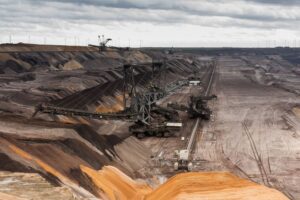4 Growing ASX Dividend Stocks to Buy and Hold for Steady Returns
![]() Ujjwal Maheshwari, May 16, 2025
Ujjwal Maheshwari, May 16, 2025
Investing in dividend stocks remains a reliable strategy for Australians seeking steady income and long-term capital growth. But which ASX-listed companies are truly delivering consistent dividend growth alongside solid fundamentals? In our view, focusing on high-quality dividend payers with strong balance sheets and growth prospects is key to building a resilient portfolio. We’re not talking about just any dividend stocks; we’re talking about those that combine yield, growth, and stability in a way that suits investors looking for steady returns over time.
In this article, we examine four ASX dividend stocks that have gained attention from investors and analysts alike. We will explore why these companies stand out, supported by data and credible sources, and discuss the factors that make them attractive for buy-and-hold investors aiming to capture reliable dividends while benefiting from potential capital appreciation.
Why Invest in Growing Dividend Stocks on the ASX?
Dividend investing is seen as a way to generate passive income, but it’s more than just the payout. It’s about sustainable dividend growth supported by strong earnings. In the Australian market, companies that increase their dividends year after year tend to be those with durable competitive advantages, efficient operations, and prudent capital management.
What are the key benefits of investing in growing dividend stocks? Firstly, rising dividends can provide a hedge against inflation, boosting the income stream over time. Secondly, these companies often have solid cash flow and management teams that prioritise returning value to shareholders responsibly. Finally, steady dividend growth often signals financial health and resilience during economic cycles.
In the current market environment, with interest rates fluctuating and economic uncertainty persisting, choosing dividend stocks with growth potential can provide both income and some defensive qualities.
Commonwealth Bank of Australia (ASX: CBA)
The Commonwealth Bank of Australia is arguably the cornerstone of the Australian financial system. As the country’s biggest bank, CBA’s role in the economy is vast, serving millions of customers through retail banking, business banking, and wealth management services. Its position gives it a significant competitive advantage that translates into consistent and growing dividends.
There is debate to be had as to whether or not it is overvalued as a growth stock, but we’re not talking about CBA as a growth stock here, we’re talking about it as a dividend stock. In the last 2 years, it has made back to back >$10bn profits and it paid out $4.65 per share in FY24, plus a further $2.25 in 1H25.
Such a performance highlights the bank’s resilient business model, supported by diversified income streams and prudent risk management. Granted, it doesn’t have the highest yield – at 2.6%; even though it pays out the highest amount per share. The bank typically distributes 70-80% of its cash earnings to shareholders, reflecting its confidence in ongoing profitability and cash flow generation. One key advantage over its peer isn’t just its big loan book, but the fact that a higher proportion is generated without brokers – meaning less outflows paid to brokers and more profitable loans.
Of course, no investment is without risks. Regulatory oversight in the banking sector is stringent, and changing interest rate environments can impact margins. However, CBA’s track record suggests it manages these challenges well, making it a reliable choice for investors seeking a combination of steady income and long-term capital growth.
Transurban (ASX: TCL)
Transurban represents a compelling opportunity to invest in essential infrastructure assets that underpin daily urban life. As an operator and owner of toll roads in Australia, the United States, and Canada, Transurban’s business model centres on delivering reliable cash flows from assets that enjoy relatively inelastic demand. If you know any other company with such long-term monopolies, let’s hear about it.
In FY24, Transurban generated operating free cash flow of around $1.9bn. This strong cash flow supports its dividend payments, which currently yield approximately 4.5%. However, it’s not just the current yield that appeals to investors; it’s Transurban’s track record of dividend growth and the outlook for future expansion.
Transurban’s portfolio is expanding through strategic acquisitions and development projects. Recent additions include the WestConnex motorway project in Sydney and the MoPac Expressway in Texas. These projects benefit from long-term contracts that include inflation-linked toll increases, providing a hedge against rising costs and securing predictable revenue streams.
The company’s forecast is optimistic, expecting mid-single-digit annual growth in operating free cash flow in the coming years. This outlook supports the likelihood of continued dividend increases, making Transurban a strong candidate for investors prioritising both income and growth.
Of course, investing in infrastructure comes with considerations. Regulatory risks, including toll pricing and contract renewals, can affect profitability. Political factors and public sentiment toward toll roads may also introduce uncertainty – especially in Sydney where the majority of its toll roads are.
Ultimately, for investors seeking a dependable dividend backed by critical infrastructure assets, Transurban offers a blend of stable income and capital growth potential, supported by a well-diversified portfolio.
CSL (ASX: CSL)
CSL stands apart as a global biotech powerhouse, delivering life-saving therapies through plasma products and vaccines. Its unique market position and exposure to the healthcare sector make it a highly attractive dividend stock, especially for investors looking for defensive qualities combined with growth.
The company reported revenues of approximately USD 14.8 billion in FY2024, maintaining a net profit margin of around 17.9%. These figures underscore CSL’s operational efficiency and robust demand for its products, which treat rare and chronic diseases.
In FY24, delivered US$14.8bn in revenue and a $2.9bn post-tax profit, both up 11% from FY23. It paid a total dividend of US$2.64 per share, or A$4. The company anticipates its profit to be $3.2-3.3bn for FY25 and for revenues to be 5-7% higher. CEO Paul McKenzie has said the company is in a strong position to deliver annualised double-digit earnings growth for the rest of this decade.
The company’s innovation pipeline is another key factor. CSL invests heavily in R&D to develop new therapies and expand indications for existing products. One recent example is Hemgenix, a gene therapy for haemophilia B – which costs US$3.5m per dose. As global populations age and healthcare access improves in emerging markets, demand for CSL’s therapies is expected to grow significantly.
Healthcare is often considered recession-resistant, and CSL exemplifies this trait. Its revenue streams tend to be less sensitive to economic cycles, providing investors with dividend stability even during downturns.
Despite the company’s relatively lower dividend yield of around 1.76% (a reflection of a higher share price), CSL’s dividend growth trajectory makes it an attractive proposition for long-term investors seeking capital appreciation alongside increasing income.
Wesfarmers (ASX: WES)
Wesfarmers is one of Australia’s most diversified conglomerates, operating in retail, industrials, and resources. Its scale and diversified earnings base provide stability that supports its reputation as a reliable dividend stock.
In FY24, the company’s profit came in at $2.6bn, up 4% from the year before, and it paid $1.98 per share in dividends compared to $1.91 the year before. Wesfarmers maintains a dividend payout ratio around 60%, which balances rewarding shareholders with maintaining flexibility for reinvestment. Its dividend yield, approximately 2.5%, is attractive in a market where income stability is valued amid economic uncertainties.
Its flagship retail operations, including Bunnings Warehouse and Kmart, continue to generate strong cash flows, despite inflationary pressures and evolving consumer behaviour. Bunnings, in particular, remains a dominant player in home improvement retail, benefiting from both DIY trends and housing market activity.
The company’s industrial division adds further resilience, encompassing businesses in chemicals, fertilisers, and industrial safety products. This diversification reduces dependence on any single sector, mitigating risk.
The conglomerate’s disciplined portfolio management is notable; Wesfarmers has demonstrated the ability to divest underperforming assets and reinvest in higher-growth areas, which bodes well for sustained earnings and dividend growth.
While retail and industrial operations face risks such as shifting consumer preferences and commodity price volatility, Wesfarmers’ diversified model and operational expertise offer investors a relatively steady income stream coupled with moderate growth prospects.
Conclusion
Choosing the right ASX dividend stocks for steady returns requires a careful balance between yield, growth, and financial health. Commonwealth Bank, Transurban, CSL, and Wesfarmers all present compelling cases as dividend growers with strong business models. They combine reliable income streams with growth prospects, aligning well with investors who want to build a resilient, income-generating portfolio for the long term.
What makes these stocks especially attractive is their ability to maintain dividend growth even amid economic challenges, a sign of management quality and business durability. We believe that by holding these stocks over time, investors can benefit from compounding returns driven by both dividend reinvestment and share price appreciation.
What are the Best ASX Stocks to invest in right now?
Check our buy/sell tips
FAQs
- What is a growing dividend stock?
A growing dividend stock is a company that not only pays dividends but increases the dividend payout regularly, typically annually. This growth reflects confidence in the company’s earnings and cash flow stability.
- Why should investors focus on dividend growth rather than just high yield?
High yield stocks can sometimes be risky if the dividend payout is unsustainable. Dividend growth stocks suggest that a company is increasing its profits and returning more value to shareholders over time, providing inflation protection and reliable income.
- How do economic conditions affect dividend-paying stocks?
Economic downturns can pressure dividends, especially in cyclical industries. However, companies with strong cash flows and defensive business models often maintain or grow dividends, offering stability during volatile periods.
- Are dividends taxed in Australia?
Yes, dividends are subject to income tax in Australia. However, many Australian companies pay franked dividends, which come with franking credits that can reduce the tax payable by investors.
- How can investors track dividend growth stocks on the ASX?
Investors can monitor dividend announcements and financial reports of ASX-listed companies, use screening tools that focus on dividend growth metrics, or follow expert analyses and broker reports that highlight reliable dividend growers.
Blog Categories
Get Our Top 5 ASX Stocks for FY26
Recent Posts
Webjet Sinks 22 Percent After Softer H1 Results and Weak Domestic Demand
Webjet Falls 22 Percent After H1 Revenue Dips and Domestic Flight Demand Softens Webjet (ASX: WJL) opened down 22 percent…
Javelin Minerals Jumps 2,900 Percent on Capital Consolidation
A Sharper Share Register Sets Javelin Minerals Up for Its Next Corporate Stage Javelin Minerals (ASX: JAV) surged an extraordinary…
Why Are Droneshield Shares Dropping and Should You Be Worried
DroneShield Selloff Tests Nerves, But Fundamentals Tell a Different Story DroneShield (ASX: DRO) experienced a sharp selloff this morning that…



